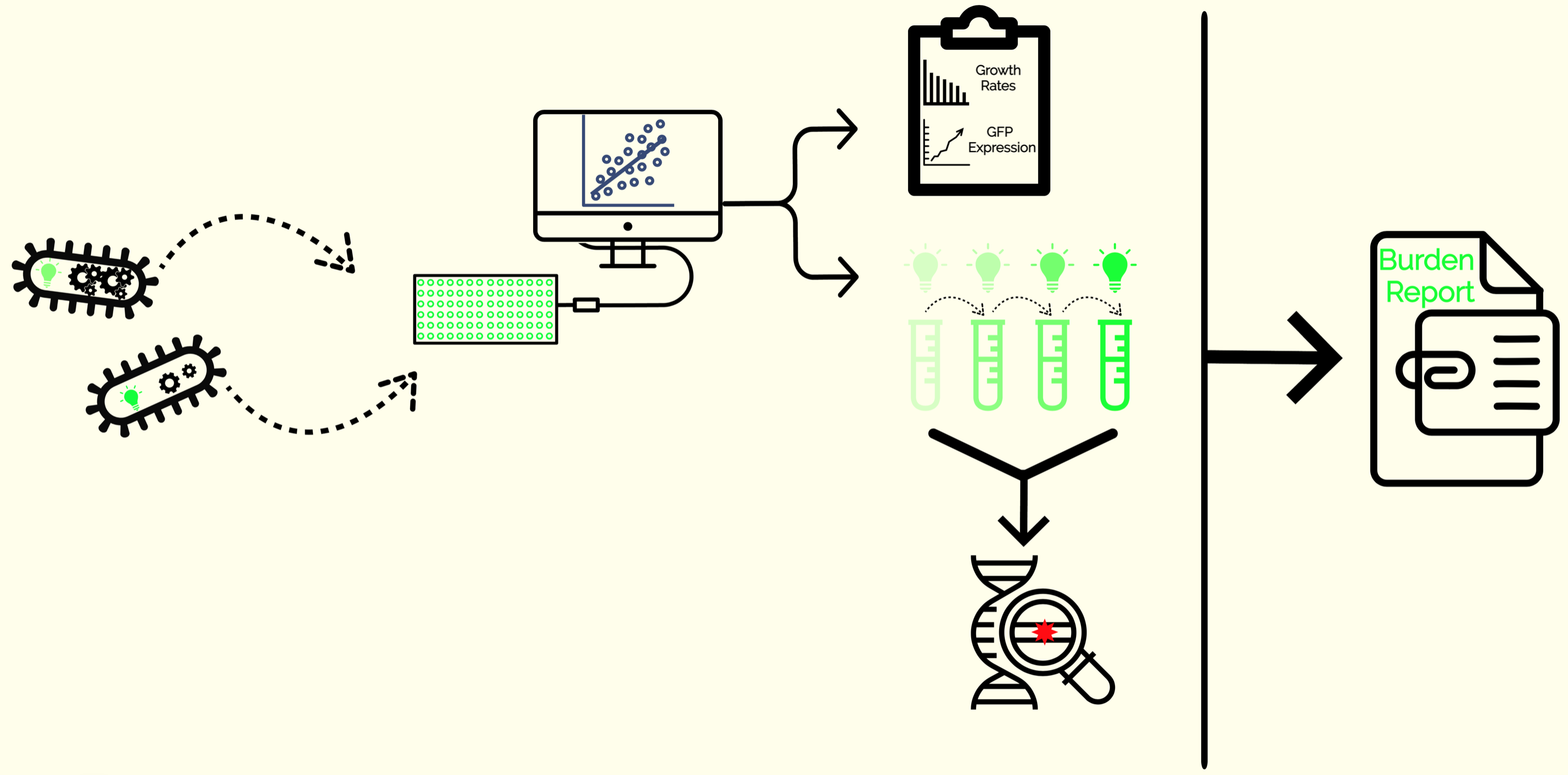Burden⚙meter
Congratulations to the Austin UTexas 2019 iGEM team for their achievements!


*
Metabolic burden is often overlooked when designing genetic devices.
Problem

Metabolic Burden

We use modeling to determine how big of a metabolic burden would lead to evolutionary instability.

Evolutionary Stability

How Do We Measure Burden?

Burdensome parts are identified by measuring and analyzing the growth rates of each part. The burdensome parts are further analyzed to determine the types of burden that they produce, which is achieved by observing GFP expression rates.
We have measured the burden of 330 parts from iGEM distribution kits
Impact on Synthetic Biology Community
We measured 330 parts from iGEM distribution kits, which includes frequently used promoters, coding regions, terminators, ribosome binding sites, and many other types of BioBricks. Synthetic biologists and iGEM students rely on the constructs within the iGEM registry without knowing if those parts are reliable. With our “Burdenometer," researchers can now assess the burden associated with those parts and choose more evolutionarily stable constructs. This information is important if a specific type of output is expected, maximizing productivity is a priority, or long-term propagation is pursued. It is also useful when troubleshooting cultivation failure. However, we are not confined to just these 330 parts! Synthetic biologists can now use our standardized measurement system to determine the burden of any genetic part that interests them.
* Created my free logo at LogoMakr.com





